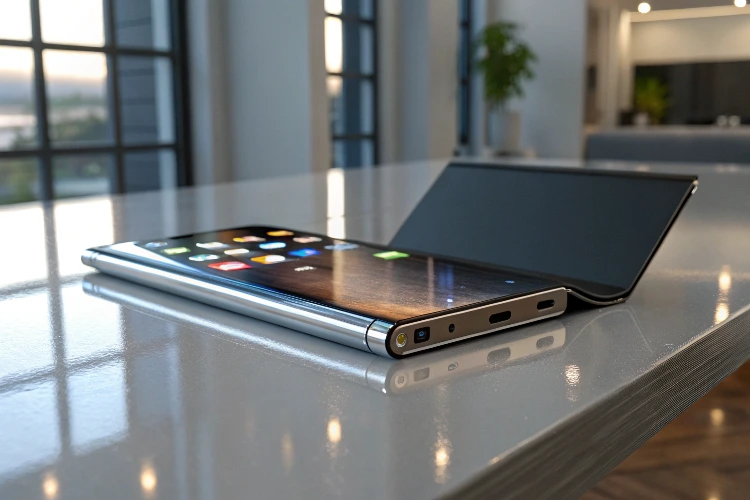Samsung Launches Rollable OLED Phone Prototype

In a striking preview of next-gen mobile hardware, Samsung has unveiled its first rollable OLED smartphone prototype, showcasing a bold leap in flexible display technology. The prototype was introduced during the company’s Future Display Summit, reinforcing Samsung’s ambition to lead the foldable and rollable form factor race in the global smartphone market.
A New Era in Mobile Form Factors
Unlike traditional foldables, the rollable OLED display allows the device to expand horizontally, transforming from a compact smartphone into a tablet-sized screen with a seamless motion mechanism. The display can roll out from 6.5 inches to 7.8 inches, offering a dynamic screen experience without a visible crease.
Samsung’s engineers have developed a motorized sliding chassis that enables smooth roll-out and retraction, allowing users to control screen size based on their needs—streaming, multitasking, or browsing.
OLED Innovation and Durability
At the core of the prototype is Samsung Display’s latest-generation AMOLED panel, designed to retain sharpness, color accuracy, and brightness even under curvature. The rollable display is built with ultra-thin glass and a protective flex polymer coating—engineered for durability after over 200,000 extension cycles.
The display also features adaptive refresh technology, power optimization algorithms, and anti-reflective coatings to support outdoor readability and energy efficiency.
Potential Applications and UX Flexibility
The rollable concept is not just a hardware statement—it’s a new direction for user experience. With seamless transitions between screen sizes, users can switch from one-hand smartphone mode to productivity or entertainment mode without folding or flipping.
Developers can optimize apps to support multi-stage responsiveness, where UI layouts adapt in real time as the screen expands or contracts. This opens doors for richer multitasking, dynamic gaming interfaces, and flexible content display in creative and professional apps.
Competing in the Foldable Arms Race
This prototype places Samsung ahead in the post-foldable evolution timeline, outpacing rivals like Motorola, Oppo, and TCL, who have shown early rollable concepts but not a functional device. While Samsung has not committed to a commercial release date, insiders suggest the rollable phone could enter production as early as Q2 2026, depending on market readiness and component yield.
With the Galaxy Z Fold and Z Flip series already leading the foldable segment, the rollable phone represents the next strategic move to extend Samsung’s display dominance across mobile, wearable, and tablet ecosystems.
